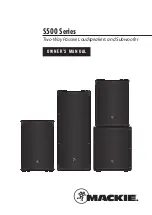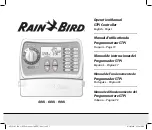
Serie PETRARCA
L’art. 6202/A serie PETRARCA è un citofono della serie Digit 2 Video.
Possono essere combinati con i monitor della serie Petrarca (art.
6002) per mezzo di staffe o di kit di trasformazione. Le funzioni sup-
plementari F1, F2 sono utilizzabili tramite la coppia di pulsanti supple-
mentari Art. 6C59.
Il citofono Art. 6202/A non dispone di serie della funzione chiamata
fuoriporta e va utilizzato esclusivamente con targhe DIGIT 2 VIDEO.
N.B
. La funzione chiamata fuoriporta può essere integrata nel citofo-
no Art. 6202 con l’accessorio Art. 6169.
Morsettiera di collegamento
1,2) Linea digitale per tramissione/ricezione, fonica, alimentazione
3)
Linea di uscita ripetizione chiamata per relè Art. 170/101
Connettori
F1-F2
Per funzioni ausiliarie F1 e F2 da collegare ad una cop-
pia di pulsanti art. 6C59.
CH FP-F3 Per collegamento pulsante chiamata fuoriporta tramite
l’Art. 6169.
Mors.
Per collegamento scheda di interconnessione monitor.
BL, BI
Collegamento microtelefono (filo blu e bianco)
CA
Comune altoparlante di chiamata
A+
Collegamento altoparlante di chiamata per massima
potenza
A-
Collegamento altoparlante di chiamata per suoneria
attenuata.
Series PETRARCA
Type 6202/A series PETRARCA are a Digit 2 Video series interpho-
nes. They can be combined with the monitors belonging to the
Petrarca series (part No. 6002) by means of brackets or transforma-
tion kits. Addional functions F1, F2 can be used with a pair of addi-
tional push-buttons type 6C59.
Interphone type 6202/A does not dispose as standard of the
"Outdoor call" function and ist to be used only with "DIGIT 2 VIDEO"
entrance panel.
N.B
The outdoor call function may be inserted on the intephone type
6202 by using the accessory type 6169.
Connection terminal
1,2) Digital line for transmission/reception, audio line, supply volta-
ge
3)
Output line for call repetition for relay Art. 170/101.
Connectors
F1-F2
For auxiliary functions F1 and F2 to be connected to a
pair of buttons, part No. 6C59.
CH FP-F3 For connection of outside door call push-button
by means of type 6169.
Mors.
To wire the circuit board for the monitor connection.
BL, BI
Handset connection (blue and white wire)
CA
Common wire for call loudspeaker
A+
Call louspeaker connection for maximum power
A-
Call loudspeaker connection for attenuated chime.
PROGRAMMAZIONE E FUNZIONAMENTO
Le operazioni che seguono devono essere effettuate solo dopo la
programmazione della targa. Per programmare il numero del citofo-
no togliere il coperchio, premere il pulsante "PROG" o “PGR” pre-
sente sul circuito e successivamente premere e mantenere premuto
il pulsante "SERR." o “LOCK” relativo alla serratura. Se l'operazione
è stata eseguita correttamente, il citofono entra in programmazione
accendendo il diodo LED presente sul circuito del citofono. In que-
sto istante si può rilasciare il pulsante "SERR."(relativo alla serratu-
ra). Se il LED non si accende ripetere l'operazione. Ora col microte-
lefono del citofono è possibile comunicare con la targa di scala affin-
ché venga inviato il codice relativo al citofono da programmare; per
inviare il codice di programmazione premere il tasto di chiamata
relativo nel caso di una targa a pulsanti o comporre il codice e pre-
mere il tasto “C” nel caso di una targa a display (l’operazione deve
effettuarsi entro 60 secondi). Quando il codice proveniente dalla
targa arriva al citofono, questi lo memorizza e lo mantiene fino alla
prossima eventuale programmazione, anche durante le fasi di man-
canza della tensione di alimentazione dell'impianto. Il citofono spe-
gne il LED a conferma dell'avvenuta programmazione. Riporre il
microtelefono del citofono. Nel caso di impianti con più di una targa,
è necessario estrarre il connettore relativo al montante citofoni delle
targhe, lasciandone una sola in funzione per la sola fase di pro-
grammazione. L'operazione di programmazione può essere ripetuta
più volte con numeri compresi fra i valori 0001 e 9999.
Programmazione 2° citofono in parallelo (eseguire la program-
mazione dopo quella del 1° citofono).
N.B.
Non si possono collegare più di 2 citofoni o monitor in parallelo.
Premere il tasto PROG. rilasciarlo e successivamente premere il
tasto corrispondente alla funzione F1 del citofono fino all’accensione
del LED. In caso di Art. 6202/A cortocircuitare i contatti “centro-
destra” del connettore (F1-F2) come indicato in Fig. 1. Nel caso sia
collegato l’Art. 6C59 premere il 1° pulsante in alto (funzione F1). Per
l’Art. 887C/A premere il tasto LAMP. Eseguire la chiamata da targa
premendo il tasto relativo nel caso di una targa a pulsanti o compor-
re il codice e premere il tasto “C” nel caso di una targa a display.
PROGRAMMING AND OPERATION
The following operations must be carried out only after the entrance
panel has been programmed. To program the interphone number,
remove the cover, press the PROG button on the circuit board and
hold down the “SERR.” button. If the procedure has been effected
correctly, the unit will assume programming mode with led (present
on the interphone circuit board) lighting up, at which point “SERR.”
push-button (related to door serr.) can be released.
If the LED does not light up, the sequence must be repeated. The
interphone handset will now enable communication with the stairway
panel so that the latter sends back the interphone code; to send the
programming code press the respective call push-button when using
entrance panels with push-buttons, or enter the code and press the
"C" push-button when using entrance panels with display (the opera-
tion must be carried out within 60 seconds).
As the code is transmitted from the panel to the phone, it will be
memorized by the unit and remain stored until further programming,
even in the event of the panel being disconnected from the power
supply. The entryphone switches the LED off in corfirmation of the
programming operation. In case of installations with several entries,
the connector for the entrance panel interphone riser must be remo-
ved, leaving only one entrance panel in operation for the program-
ming phase. This operation can be repeated any number of times,
using other numbers between 0001 and 9999.
Programming the 2nd interphone in parallel (carry out the pro-
gramming after that of the 1st interphone)
NOTE: It is not possible to connect more than two interphones or
monitors in parallel.
Press the PROG. push-button, release it and then press the push-
button corresponding to the interphone F1 function until the LED
lights up. When using type 6202/A short-circuit the "centro-destra"
(centre-right) connector (F1-F2) as indicated in Fig. 1. If Art. 6C59 is
connected , press the first push-button at the top (Function F1). With
type 887C/A press the "LAMP" push-button. Carry out the call from
the panel by pressing the respective push-button (when using
entrance panels with push-buttons) or enter the code and the press
the "C" push-button (when using entrance panels with display).
I
GB
Serie 8870
L’art. 887C/A è un citofono della serie Digit 2 Video da parete. Il
citofono Art.887C/A non dispone di serie della funzione chiamata
fuoriporta. Fornito di 2 pulsanti, 1 per apertura serratura e 1 per la
funzione ausiliaria F1. Per utilizzare la funzione chiamata fuoriporta
inserire l’accessorio Art. 6169/A come da schema variante 6.
Morsettiera di collegamento
1,2) Linea digitale per tramissione/ricezione, fonica, alimentazione
3)
Uscita per ripetizione chiamata con relè Art. 170/101
-)
Comune
FP) Morsetto per collegamento pulsante per chiamata fuoriporta
Connettori
BL, BI
Collegamento microtelefono (filo blu e bianco)
C
Comune altoparlante di chiamata
A+
Collegamento altoparlante di chiamata per massima
potenza
A-
Collegamento altoparlante di chiamata per suoneria
attenuata
Series 8870
Type 887C/A is a surface wall-mounted interphone from the Digit 2
Video series. Art. 887C/A does not dispose as standard of the out-
door call function. Provided with 2 push-buttons, 1 for lock release
and 1 for auxiliary function F1. To use the outdoor call functioon
insert the accessory type 6169/A as per wiring diagram on variation
6.
Connection terminal
1,2) Digital line for transmission/reception, audio line, supply voltage
3)
Output for call repetition with relay Art. 170/101.
-)
Common
FP)
Terminal for connection of outdoor call.
Connectors
BL, BI
Handset connection (blue and white wire)
C
Common wire for call loudspeaker
A+
Call louspeaker connection for maximum power
A-
Call loudspeaker connection for attenuated chime
2






























